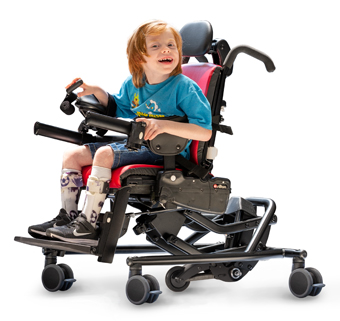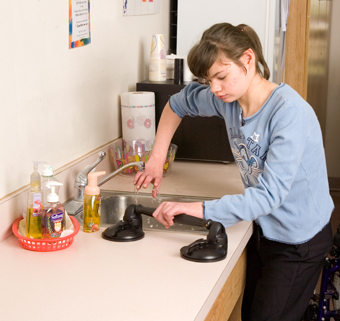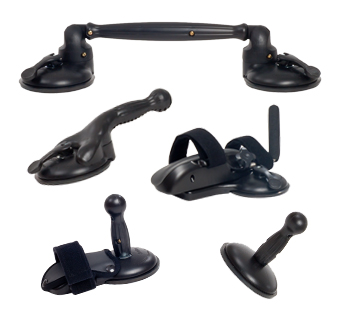Correct Positioning in the Rifton Activity Chair
| February 2014 The Rifton Activity Chair was designed to encourage functional and active sitting postures for children with cognitive and physical disabilities. Because such children can present with a wide variety of diagnoses and positioning requirements, helping them participate in classroom or family activities can be tough, but with the right chair it’s possible. The Rifton Activity Chair, because of its versatility, has become the classroom standard for most therapists, and is increasingly seen in the home setting. It can accommodate children with basic positioning needs or those who require significant amounts of support while at the same time allowing access to different classroom environments such a cafeteria table or floor-height circle time. It is now manufactured in place of all other Rifton seating lines including the Rifton Toddler Chair (commonly known as the “Rifton chair”).
The Rifton Activity Chair was designed to encourage functional and active sitting postures for children with cognitive and physical disabilities. Because such children can present with a wide variety of diagnoses and positioning requirements, helping them participate in classroom or family activities can be tough, but with the right chair it’s possible. The Rifton Activity Chair, because of its versatility, has become the classroom standard for most therapists, and is increasingly seen in the home setting. It can accommodate children with basic positioning needs or those who require significant amounts of support while at the same time allowing access to different classroom environments such a cafeteria table or floor-height circle time. It is now manufactured in place of all other Rifton seating lines including the Rifton Toddler Chair (commonly known as the “Rifton chair”).
But even with the best equipment, positioning children with special needs is a challenge particularly when behavioral issues are involved, and here a word of caution is needed. It is important to realize that the Rifton Activity Chair should be used to provide boundaries; the prompts should be placed in a way that will give a child a sense of security without feeling trapped as this will make them act out even more. Sometimes just the firm back and armrests of the chair provide this needed security. Or using the lumbar and seat support kit to provide extra cushioning can do the job. The key is not to overdo the supports. The less you can get away with the better, as this allows the muscles of the body to activate and independently support postures. This same principle applies even to those who have severe physical disabilities and may require additional supports.
Here’s Physical Therapist Beth Vandivier sharing how she uses the Rifton Activity Chair for therapy purposes:
With these chairs, our clients can be quickly and correctly positioned for therapeutic activities, therapeutic exercise and during specialized feeding programs. The Activity Chairs enable our therapists to treat children of different ages, body types and with a variety of positioning needs. An added bonus in the parents can see the immediate benefits of correct positioning of their children during functional activities.
And Kathy Sheesley, PT, DPT describes one case in particular:
We had a hard time finding seating for a high school student who is large, strong and has challenging behavioral issues until we tried the large standard Activity Chair. His teachers say this is the only chair that gave him a chance at doing work.
Especially impressive was the fact that the chair with the spring back and spring seat did enough to meet his sensory needs so that the teacher didn’t need to use the hip belt. That is a huge thing right now. We could position him right up to the work table and for the first time in over a year his teacher could actively engage him in classroom activities.
As with all adaptive devices for children with special needs, it is critically important for caregivers to recognize that straps and support prompts are for positioning purposes only. They should never be used for restraint. For more information on this, read the statement by Karen Pierz, PT Concerning Appropriate Use of Straps and Supports with Rifton Products. See the Purpose of straps and supports pdf for more resources.




